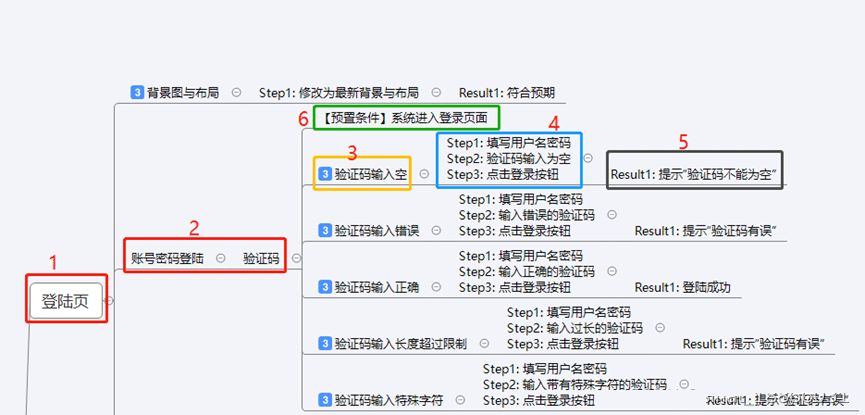
需要安装python3环境
需要安装 xlwt、xmindparser 这两个第三方包
XmindExcel.py 文件代码
# coding=utf-8
import time
import xlwt
from past.builtins import raw_input
from xmindparser import xmind_to_dict
def resolvePath(dict, lists, title):
# title去除首尾空格
title = title.strip()
# 如果title是空字符串,则直接获取value
if len(title) == 0:
concatTitle = dict['title'].strip()
elif "makers" in dict.keys():
if "priority-" in str(dict["makers"]):
concatTitle = title + '\t' + dict['title'].strip() + "\t" + str(dict["makers"])
else:
concatTitle = title + '\t' + dict['title'].strip()
else:
concatTitle = title + '\t' + dict['title'].strip()
if dict.__contains__('topics') == False:
lists.append(concatTitle)
else:
for d in dict['topics']:
resolvePath(d, lists, concatTitle
def xmind_cat(list, excelname, groupname):
f = xlwt.Workbook()
sheet = f.add_sheet(groupname, cell_overwrite_ok=True)
row0 = ["测试用例编号", "用例标题", "预置条件", "执行方式", "优先级", "测试步骤", "预期结果", "所属项目"]
# 生成第一行中固定表头内容
for i in range(0, len(row0)):
sheet.write(0, i, row0[i])
# 增量索引
index = 0
# case级别
case_leve_index = ""
# 前置条件
case_pre_condition = []
pre_num = 0
for h in range(0, len(list)):
# print("list:",list)
lists = []
resolvePath(list[h], lists, '')
for j in range(0, len(lists)):
# 将xmind转成excel
lists[j] = lists[j].split('\t')
try:
# print(index)
if "【预置条件】" in lists[j][-1] or "【前置条件】" in lists[j][-1]:
case_pre_condition.append(lists[j])
pre_num += 1
else:
case_leve = ""
for n in range(len(lists[j])):
if 'priority-' in str(lists[j][n]):
case_leve_index = n-1
if "priority-1" in str(lists[j][n]):
case_leve = "High"
elif "priority-2" in str(lists[j][n]):
case_leve = "Middle"
elif "priority-3" in str(lists[j][n]):
case_leve = "Low"
lists[j].pop(n)
break
case_name = "-".join(lists[j][:case_leve_index+1])
sheet.write(j + index + 1 - pre_num, 1, case_name) # 标题
if len(lists[j][case_leve_index:-1]) < 2:
sheet.write(j + index + 1 - pre_num, 6, lists[j][case_leve_index + 1]) # 期望结果
else:
sheet.write(j + index + 1- pre_num, 5, lists[j][case_leve_index + 1]) # 步骤
sheet.write(j + index + 1- pre_num, 6, lists[j][case_leve_index + 2]) # 期望结果
sheet.write(j + index + 1- pre_num, 3, "手动") # 执行方式
sheet.write(j + index + 1 - pre_num, 4, case_leve)
# 预置条件
if len(case_pre_condition) > 0:
for pre_list in case_pre_condition:
if set(pre_list[:-1]) < set(lists[j]):
sheet.write(j + index + 1 - pre_num, 2, pre_list[-1])
except:
print("请检查编写的用例是否符合规范:", lists[j])
# 遍历结束lists,给增量索引赋值,跳出for j循环,开始for h循环
if j == len(lists) - 1:
index += len(lists)
f.save(excelname)
def maintest(filename, excelname):
out = xmind_to_dict(filename)
groupname = out[0]['topic']['title']
xmind_cat(out[0]['topic']['topics'], excelname, groupname)
if __name__ == '__main__':
try:
path = raw_input("请输入Xmind用例文件路径,可将文件拖拽到此处:")
filename = path
excelname = path.rstrip('xmind') + 'xls'
maintest(filename, excelname)
print('SUCCESS!\n生成用例成功,用例目录:%s' % excelname)
except:
print('请确认后重试:\n1.用例文件路径中不能有空格换行符\n2.请使用python3运行\n3.检查xmind文件中不能有乱码或无法识别的字符(xmind自带表情字符除外)\n4.检查是否将已生成的excel文件未关闭')运行XmindExcel.py文件,输入文件目录运行即可。生成的Excel文件会在Xmind文件的同路径下,文件名称与Xmind文件名称一致
